
To You from Failing Hands
Official Commemoration, 1942 - Present
Official Commemoration
The Cambridge American Military Cemetery
Dr Sam Edwards, Reader in History at Manchester Metropolitan University, discusses the significance of official commemoration of the East Anglian Air War in Britain:
‘There weren’t bodies or funerals’, recalled James Goodson, a commanding officer of the 336th Fighter Squadron based at Debden, ‘they just weren’t around anymore’. Such was the essence and experience of air combat in the wide blue yonder. Here one minute, gone the next. This was twentieth century war reduced to its brutal simplicity: a collision of machines which exacted a heavy price in human lives; futures lost amongst the ‘tumult in the clouds’. By the spring of 1943, those American aircew based in Suffolk were all too familiar with this price. These were the months during which the repeated attempts of the ‘Mighty Eighth’ to break into Fortress Europe exacted an increasingly heavy toll. Missions were launched; machines were lost; bodies were broken, or were disappeared. Understandably, therefore, it was in the latter half of 1943, just as the losses mounted, that American military figures based in East Anglia began contemplating how best to mourn and memorialise their losses. Various commemorative projects duly emerged, but only one was the work of what we might call ‘official’ culture: the American military cemetery established not far from Cambridge.
This was a location chosen because of its closeness to the major American bases in the region and also because the US military had identified what it felt was an especially attractive site – Madingley Hill, a place made famous by the poetry of Rupert Brooke, himself of course a warrior buried overseas in a foreign field. By 1944 the site at Madingley was under the control of the US military and had already begun to receive the bodies of the fallen. Once the war ended still more bodies would arrive as the American military authorities decided to consolidate all British burials into a single location (during the war burials had occurred in various places). The only exceptions were the result of those next of kin who opted to have their loved one’s remains returned to the United States, at government expense.
In the post-war period, with the number of permanent burials now known, the site was further developed under the supervision of the American Battle Monuments Commission (ABMC), a federal agency tasked with the construction and maintenance of overseas American war cemeteries and memorials. The ABMC had been created in the aftermath of the Great War and thus by the 1940s was well-experienced in discharging its duties. Indeed, it had previously constructed a cemetery in England, at Brookwood in Surrey, where are buried 468 members of the American Expeditionary Force.
The cemetery at Madingley was far bigger, however, than its predecessor in Surrey, and eventually contained 3,812 burials together with the names of another 5,127 Americans with no known grave, inscribed on the ‘wall of the missing’. But whilst different in size and scale, much of the symbolism remained consistent with that at Brookwood, especially in terms of how the dead were memorialised: each was buried with a white marble headstone in the form of either a Latin Cross or a Star of David. Elsewhere, an imposing Chapel was built to provide a space for solemn contemplation (it also includes inscriptions and cartography explaining the war fought from the region of the Eighth Air Force). The sum total was – and still is – an impressive expression of American commitment to honouring its fallen; a space for sombre remembrance and for tearful reflection. But, as the work of ‘official culture’, it also offers an equally assertive political statement. And this is a statement written amidst the turmoil and uncertainty of the immediate post-war period, and of the early Cold War (the cemetery was finally completed and dedicated in 1956). In its marble and masonry it speaks of a continued American commitment to Britain and to Europe, and of a continued American commitment to the defence overseas of ‘Freedom’. It is a statement of a sacrifice made, and of a price paid. And so perhaps, too, there is a hint here of a reminder to Britons of a blood debt incurred (a very similar statement made, of course, by those Commonwealth War cemeteries built in their hundreds in France and Flanders after 1918). The ABMC cemetery at Madingley is therefore a memorial funded, conceived and created by ‘official’ culture. It is the work of military officers and of a federal agency. It is a landscape of remembrance, but one which also carves in stone the ideas, ideals and politics of its makers, and of its moment.
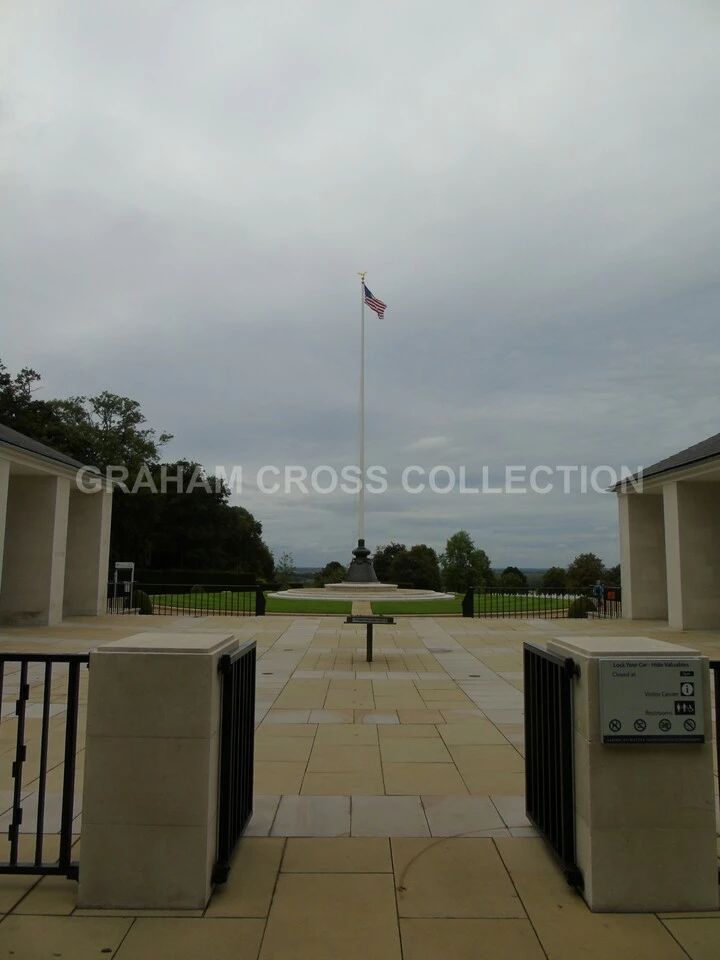
‘Two F.W. 190 dove on us head on from about 30,000. We cut left with the rest of the formation, our lead and right wing had numerous holes, but no one hurt… Lt. Tripp did not return. Lt. Tipton & Nelson also did not return…This war is being “played for keeps.”’
1st Lt. Roland W. Myers, 385th Bomb Group, Diary, 1945 Diary Entry, March 2, 1945
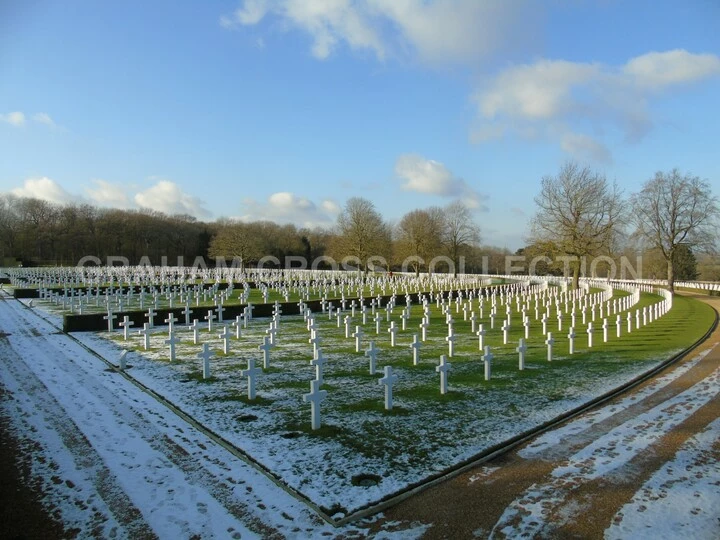
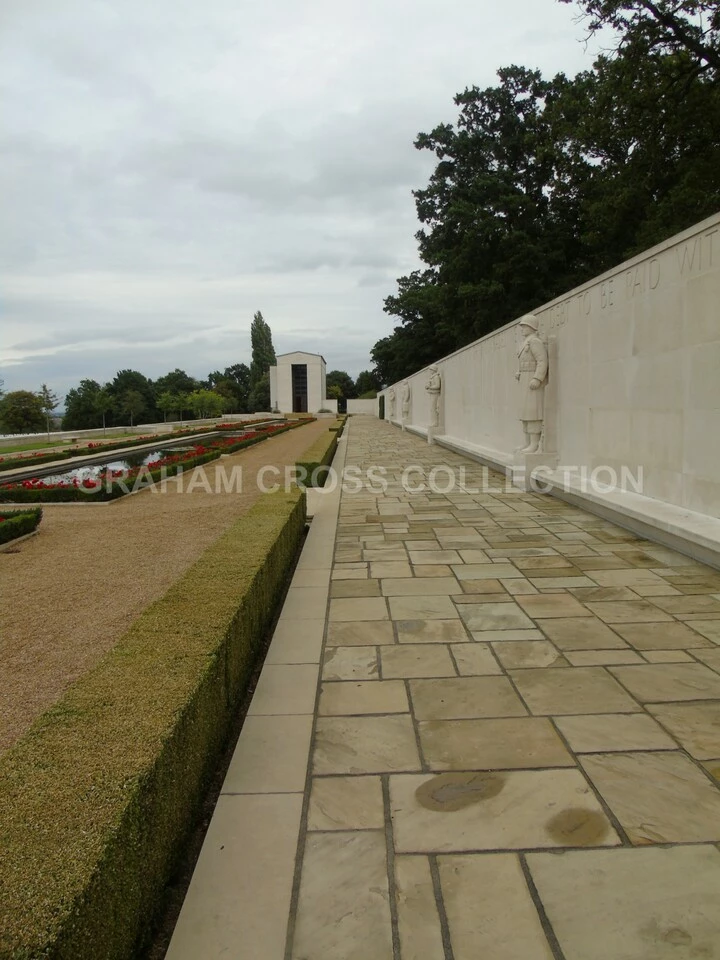
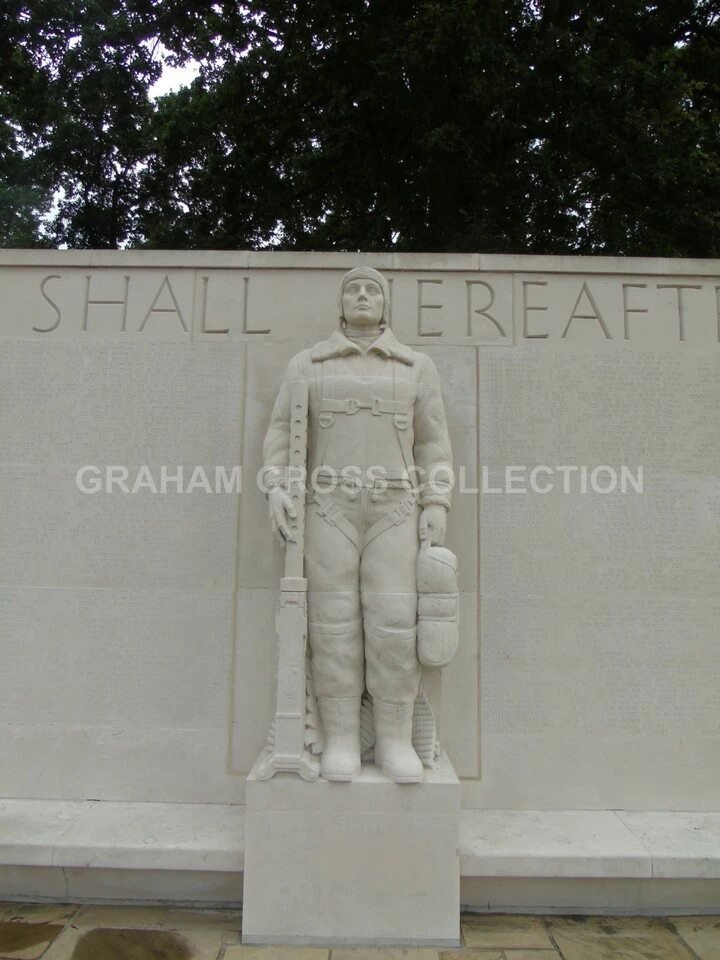
‘In another flight Bergeron was hit and blew up. McDonald got hit… and could not stop the bleeding, tried to get altitude but was too weak. Last seen attempting to belly in. Last words “write my wife and tell her not to worry. I’ll be alright.” He sure had guts.’
2nd Lt Harry Brown, 353rd Fighter Group, Raydon Diary, May 29, 1944

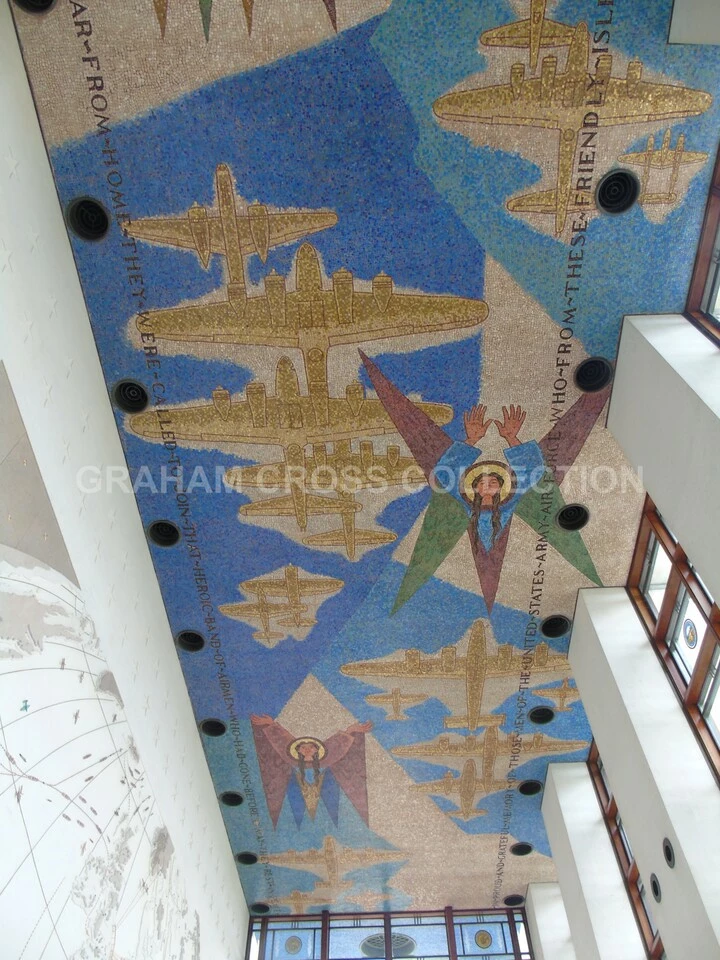
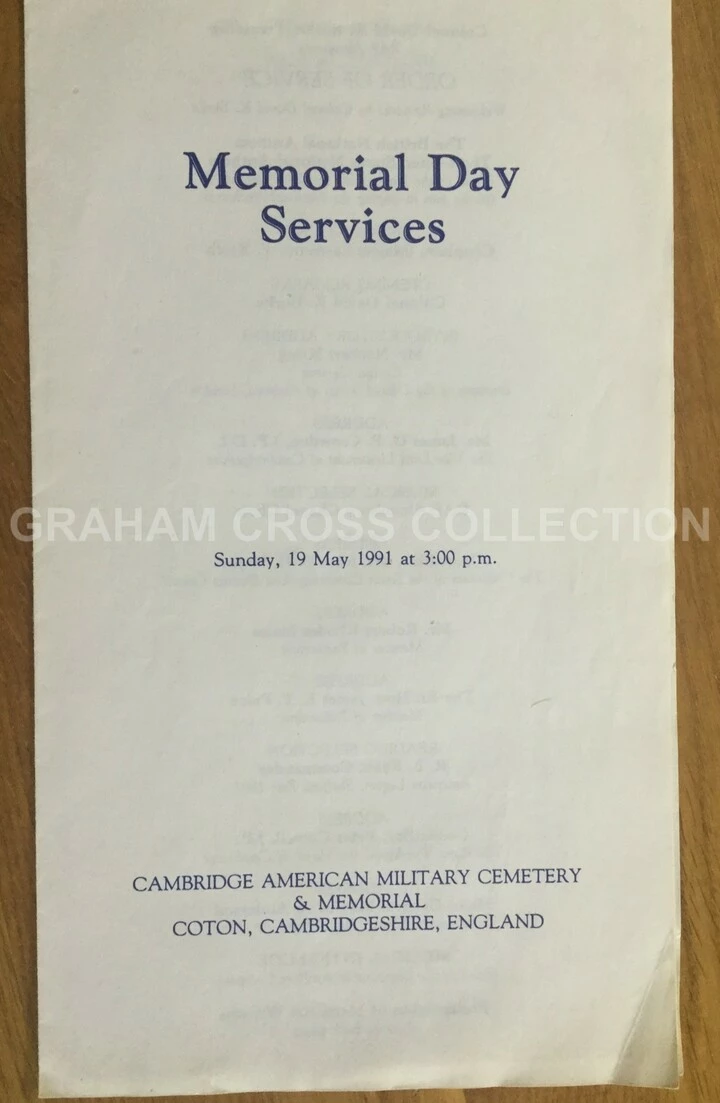
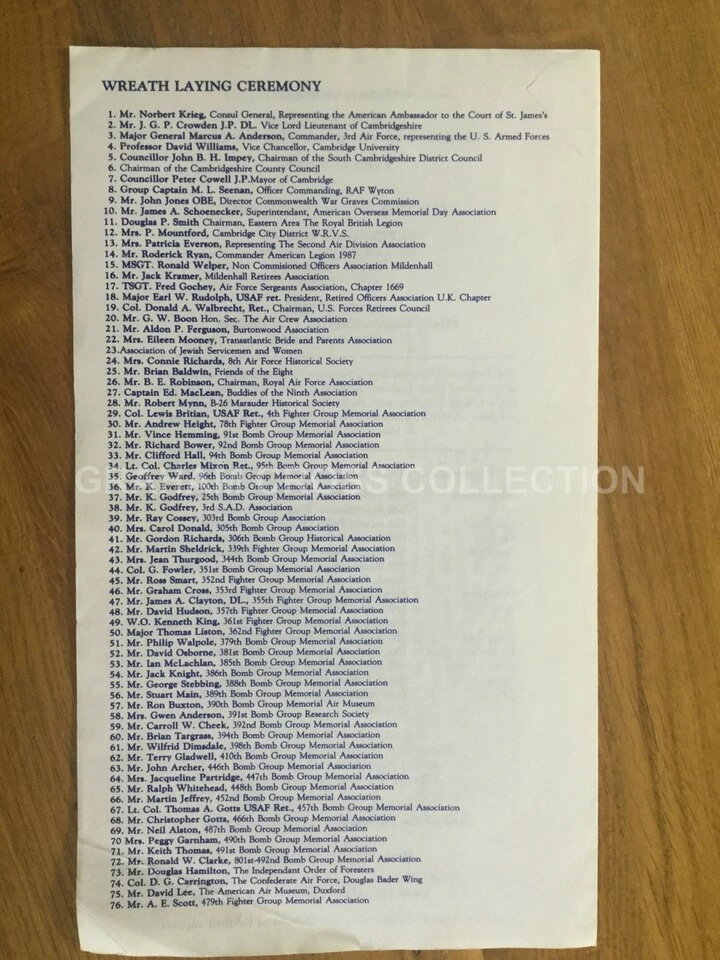
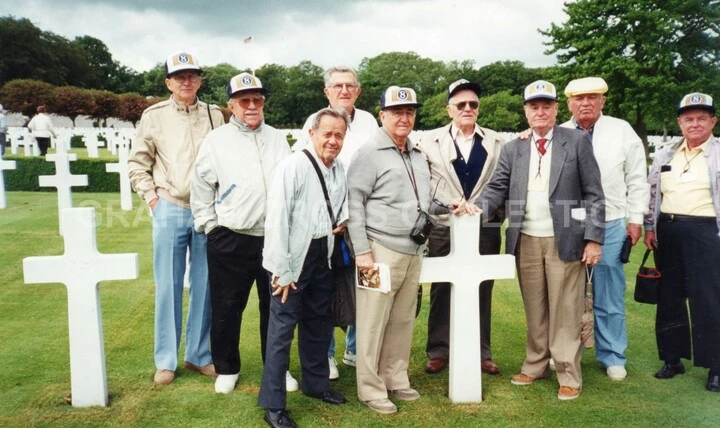
The Second Air Division Memorial Library
Although largely based in Norfolk, the Second Air Division did have some fighter and bomber groups based in Suffolk. Major General William E. Kepner, one of the last commanders of the Second Air Division, had an eye for posterity and made sure his organisation left a lasting historical legacy. In 1945, he launched an appeal amongst the men of the Second Air Division that raised £20, 916 to provide a memorial. In the event, it would be some time before a Memorial Room was possible and by the time of the dedication ceremonies on June 13, 1963, the fund had risen to £34,640. After all expenses, there remained £19,566 that became an endowment for a unique living Memorial. The Memorial Room and Library provided many years of service in that capacity until a devastating fire caused by an electrical fault completely destroyed the room and much of its valuable contents on August 1, 1994. From the ashes of disaster rose a new Second Air Division Memorial Library in the new Forum building in central Norwich dedicated November 7, 2001.
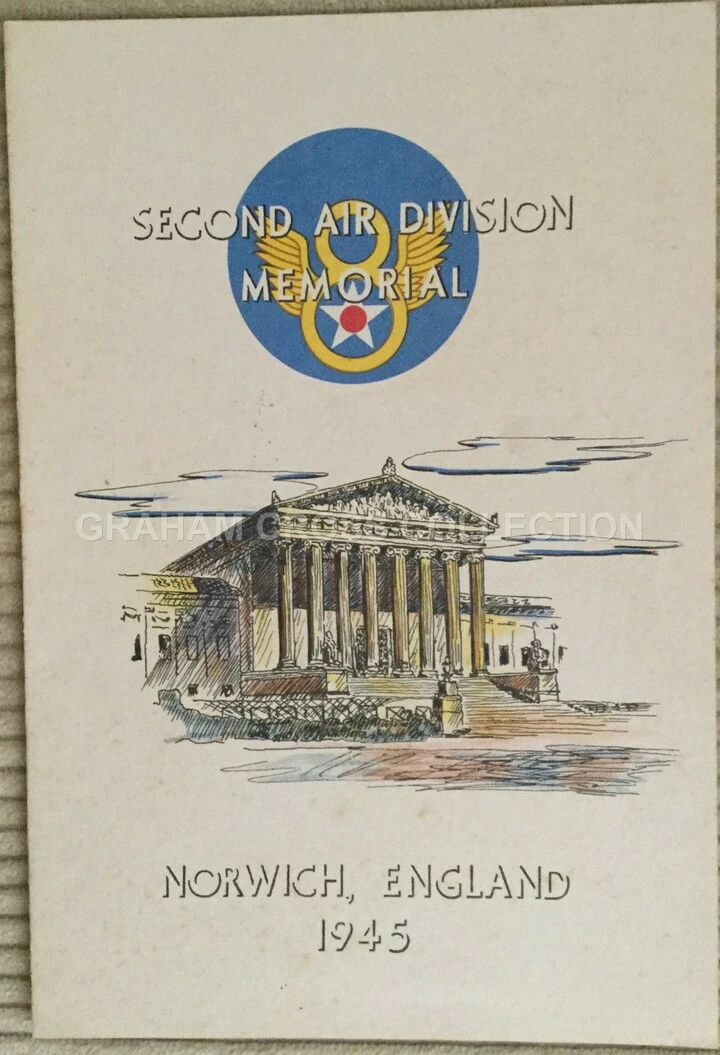
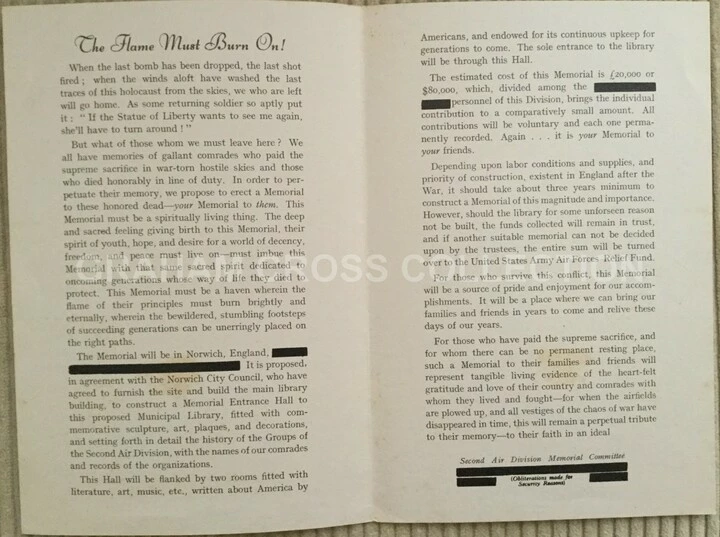
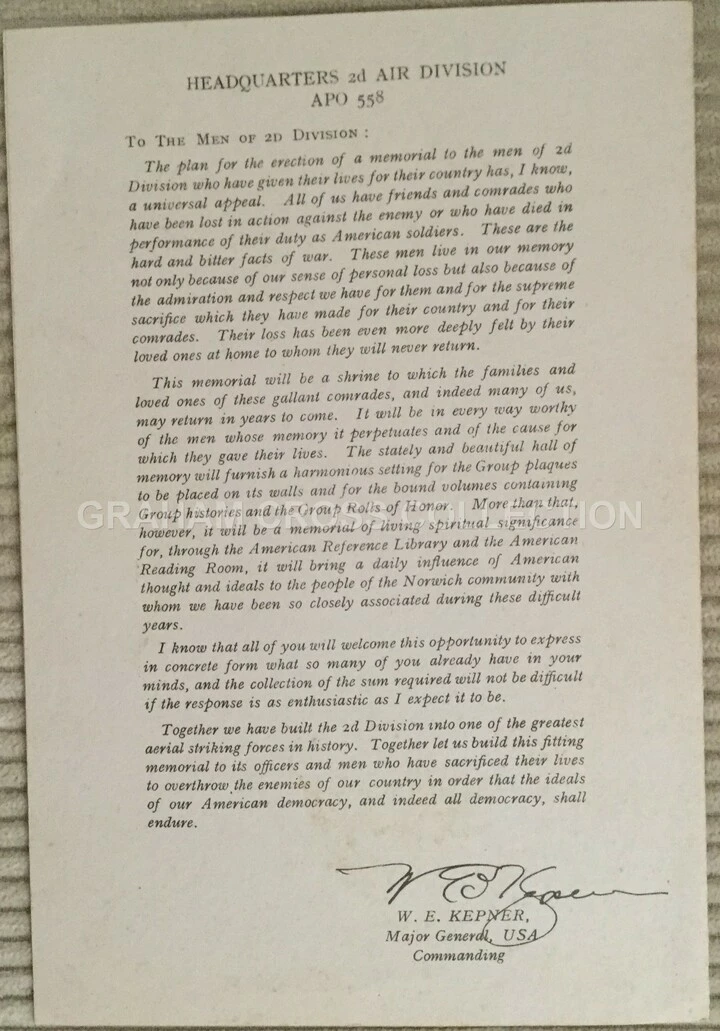


The Commercialisation of Commemoration
The American presence in Britain during WWII, and particularly that of the Eighth Air Force, has generated a significant amount of interest in the years since. The popularity of some selected aspects of the ‘friendly invasion’ has generated a vast array of commercial products from commemorative tea towels to books through which people can engage with the past.
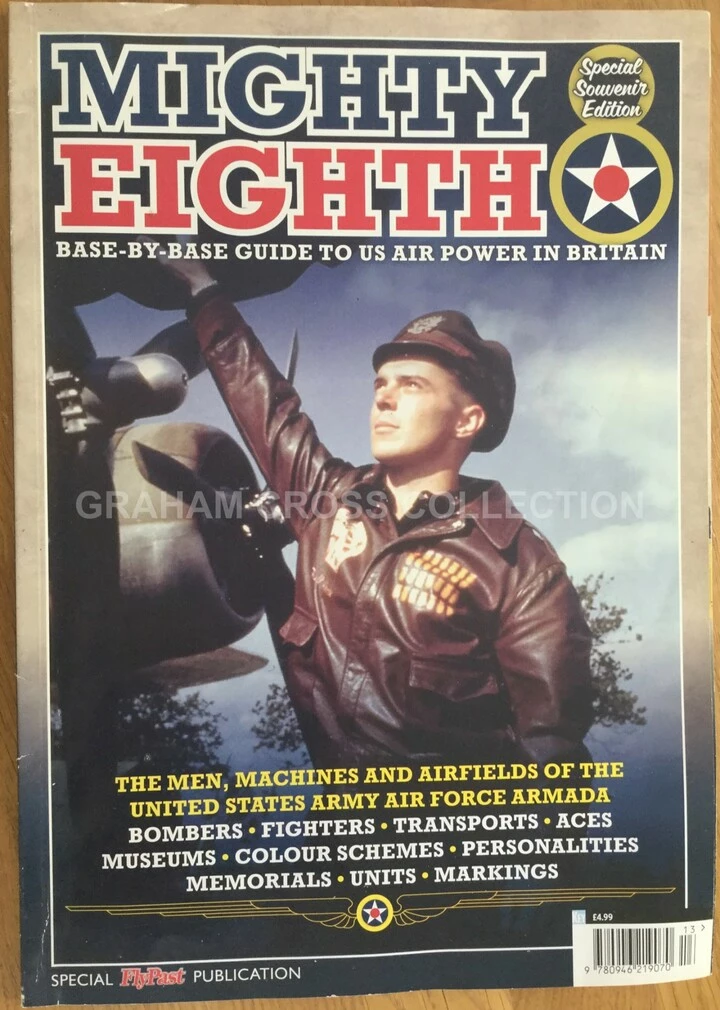
In the UK, official and government backed bodies have also often sought to tap into public interest in the pursuit of wider economic and cultural policy. The first major project that attempted to turn shared history and commemoration into tourist dollars was the East Anglian Tourist Board. Themed around the fiftieth anniversary of the first American arrivals in 1992 and with Prince Andrew as a patron, the ‘Return to England’ campaign featured summer long events at locations important to the Americans.
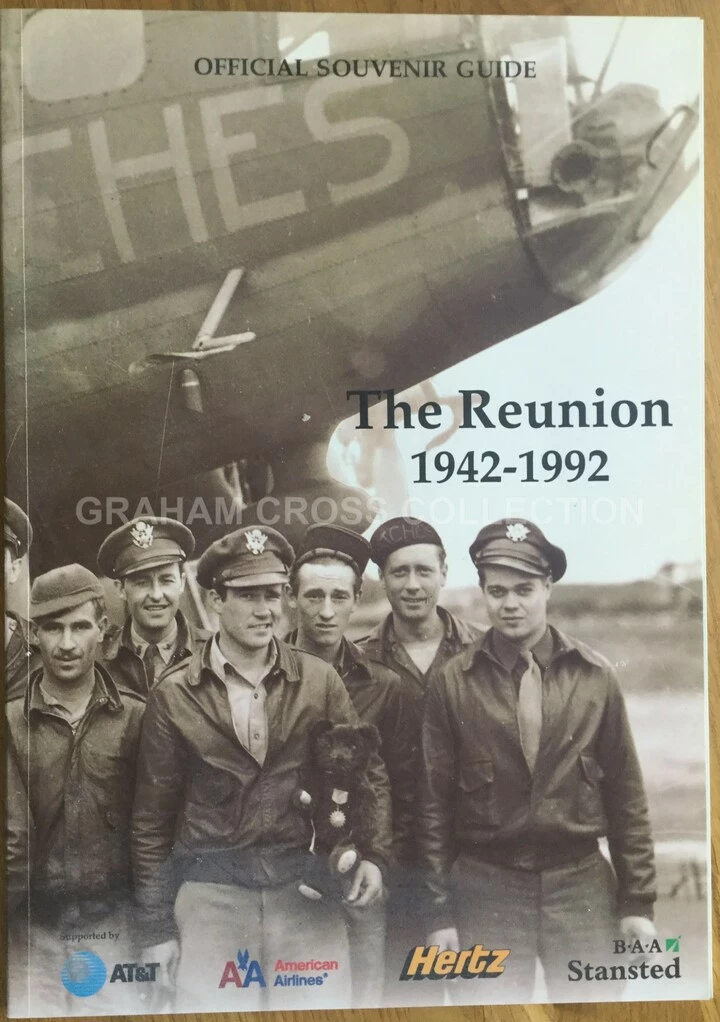
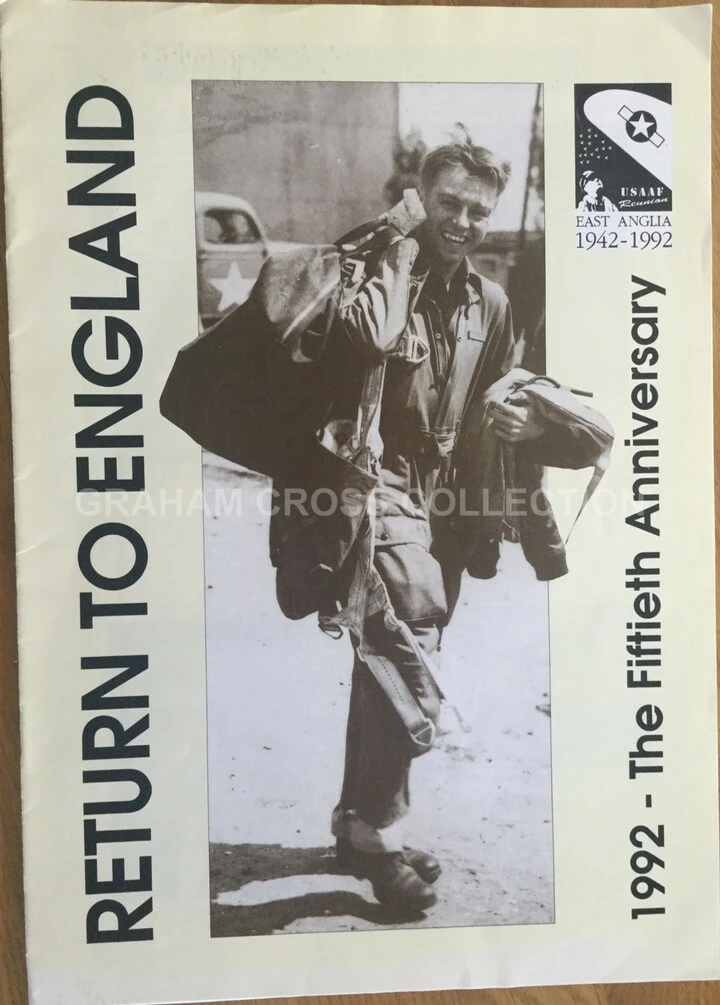

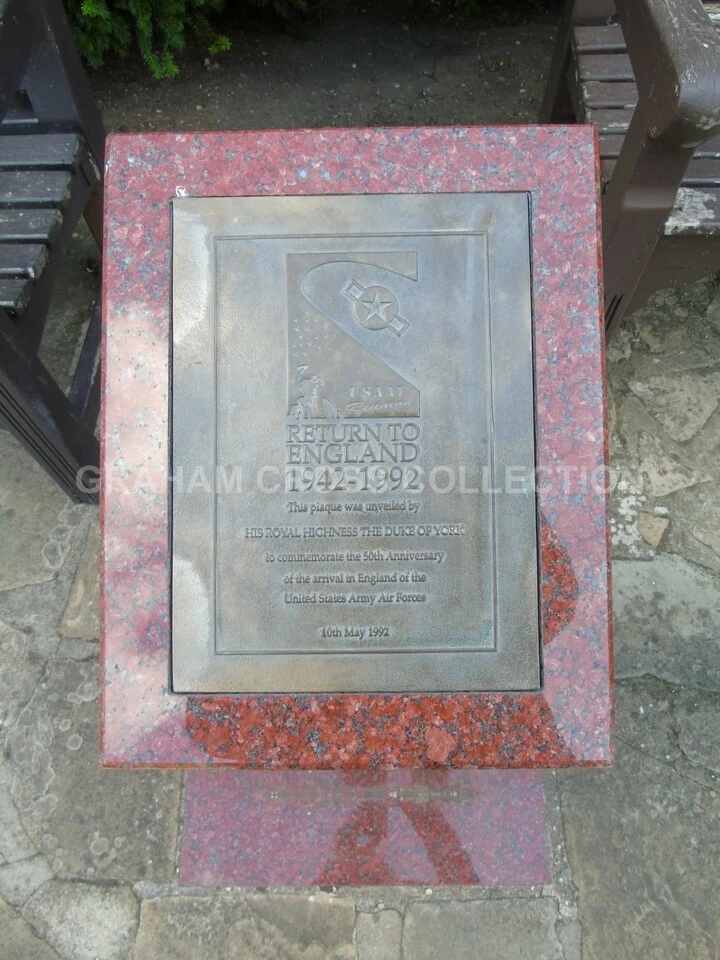
In 2017, tourist promotion agencies deemed a twenty-five year gap enough to enable the launch of another appeal to entice American visitors to the region. Attracted by hopes of a convenient tie-in with a planned HBO project covering the American air war in Europe (now currently planned by Apple TV) and a £237,000 grant from the Discover England Fund (giving total funding of £387,000) the project had a more direct tourism business focus. The project manager wrote that through Duxford and 8th in the East ‘we have sourced a 30k+ database of potential visitors.’ They went on ‘This product is currently fragmented and disjointed. Key assets include the Imperial War Museum Duxford, Madingley American Cemetery and Memorial, 2nd Air Division Memorial Library…This project will give the key assets and associated products a cohesive, over-arching umbrella product so that it can be promoted and sold to US visitors.’ A lavish brochure, this time with forewords by HRH the Duke of Cambridge and Tom Hanks, and associated website and launch event completed the offer.
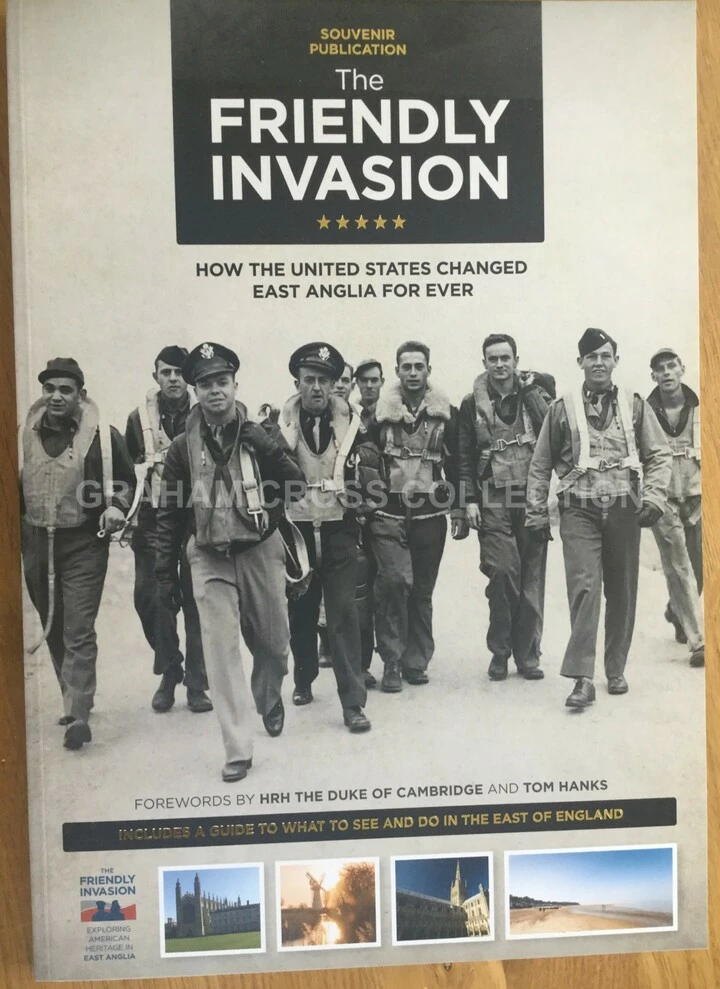
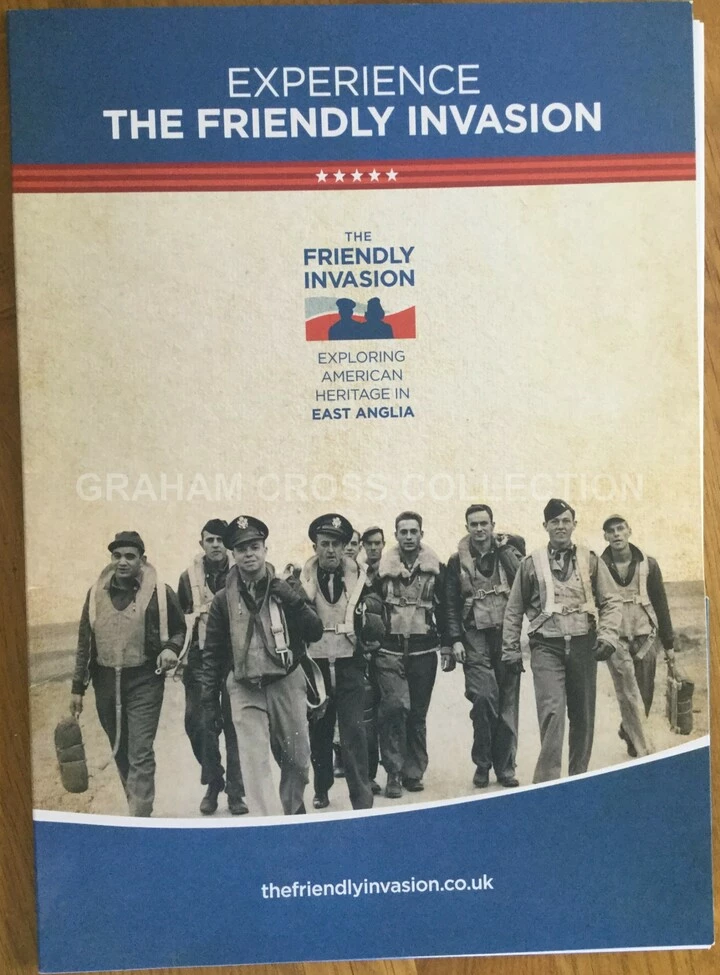
The currency of the ‘Friendly Invasion’ has also attracted professional heritage organisations keen to receive grants from the Heritage Lottery Fund to explore aspects of local history. In 2013 New Heritage Solutions, a Community Interest Company, received £575,000 to explore the friendly invasion in East Anglia over three years via community engagement projects, a website and various publications.
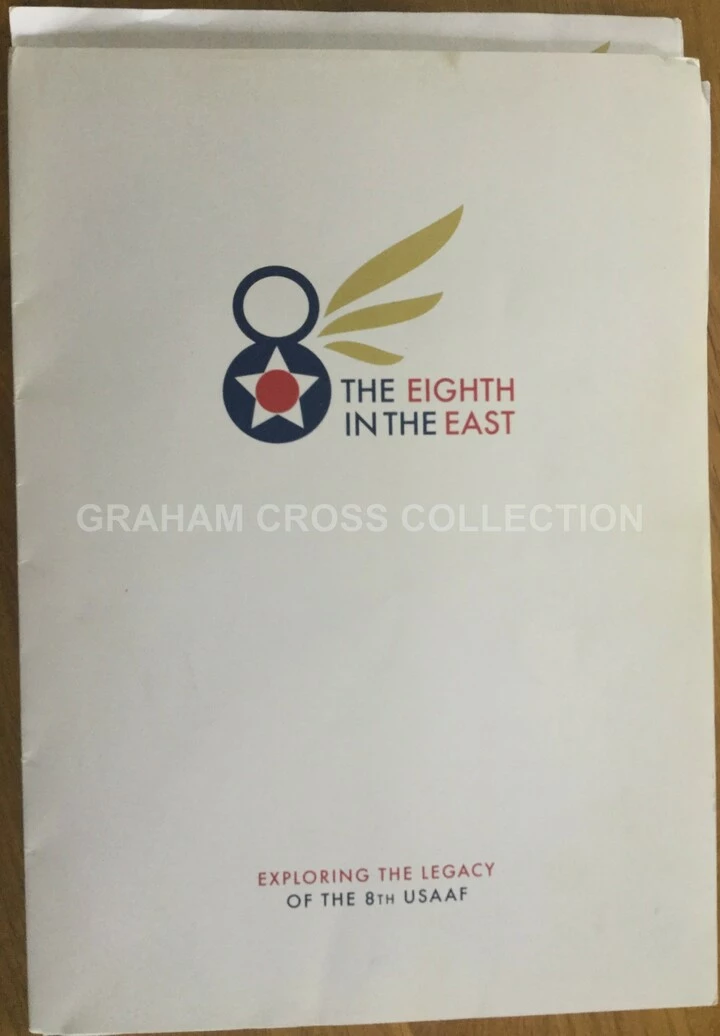
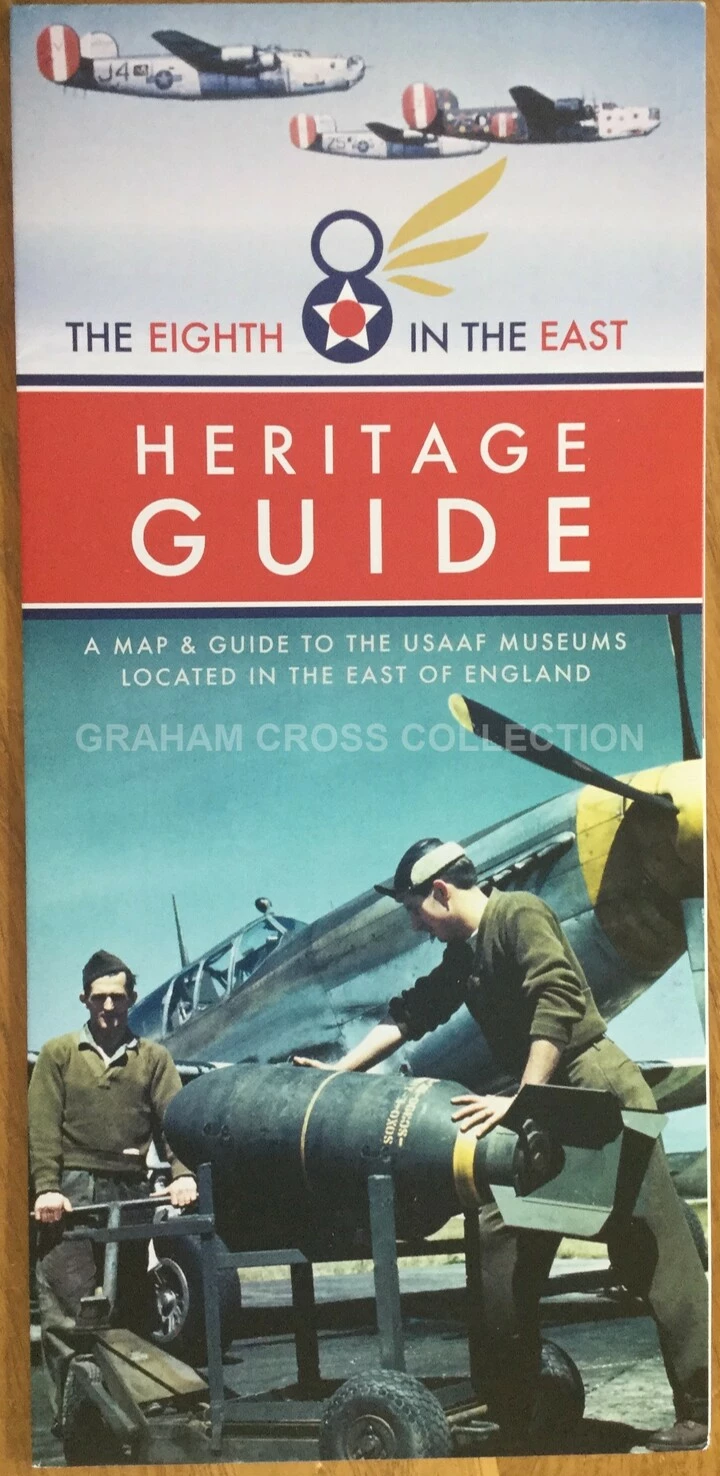
The American Air Museum at Duxford received £6.5 million in lottery grants in 1995 for construction and a further £980,000 in 2013 for a redevelopment project to help attract visitors. It also runs an effective campaign and website to attract donations and legacies from Americans with connections to wartime service in Britain.
Attendance figures are a concern to relevant organisations as those with a living memory of World War II die off and a new generation with no direct connection to wartime events reaches maturity. The American Battle Monuments Commission invested $6 million at Madingley in a new ‘Interpretation Centre’ designed to attract increased visitor numbers that opened in October 2013. Whilst a welcome attempt to communicate with new audiences, this inevitably brings concerns that these sites of remembrance are sacrificing some of their original purpose to become tourist destinations.
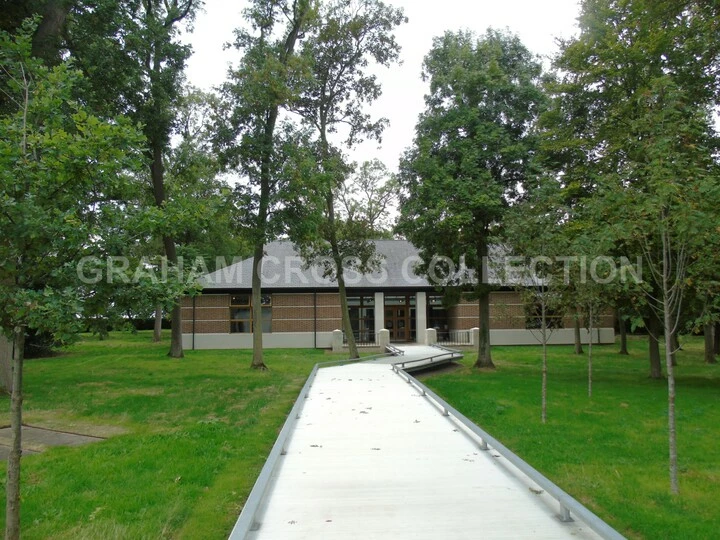

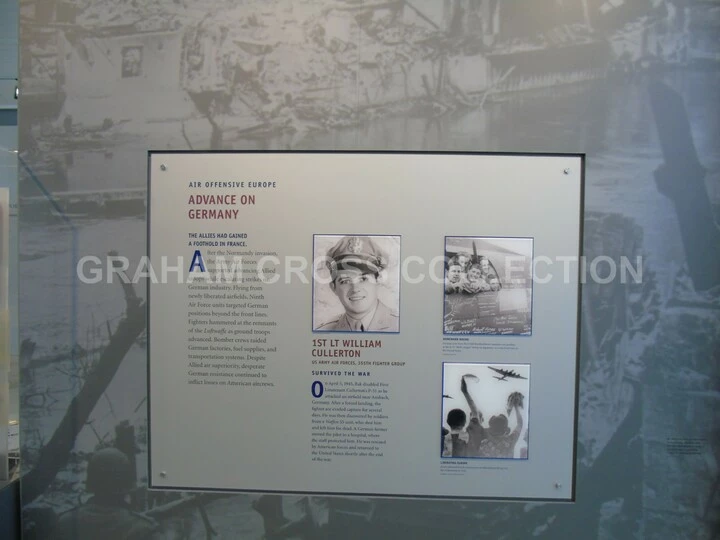
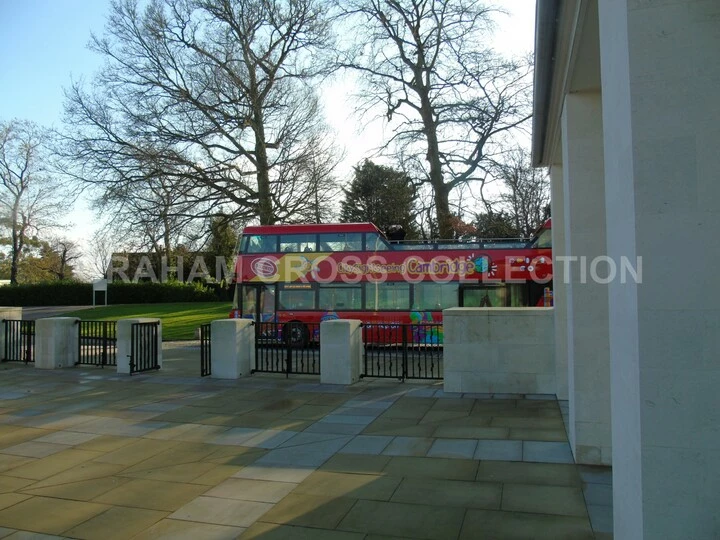
Did you participate in official commemoration? Why not share your story and images?
Share your story